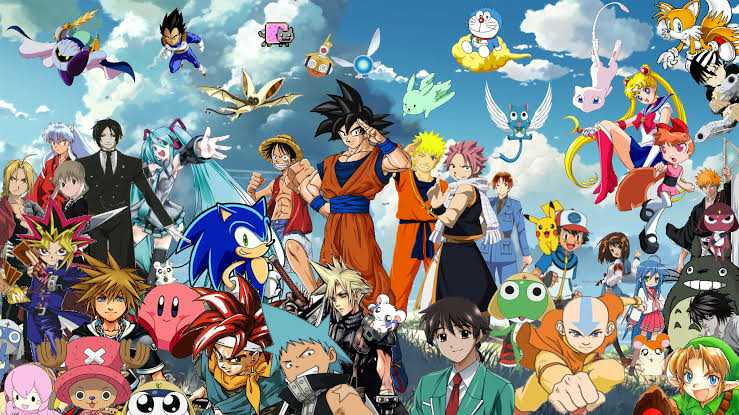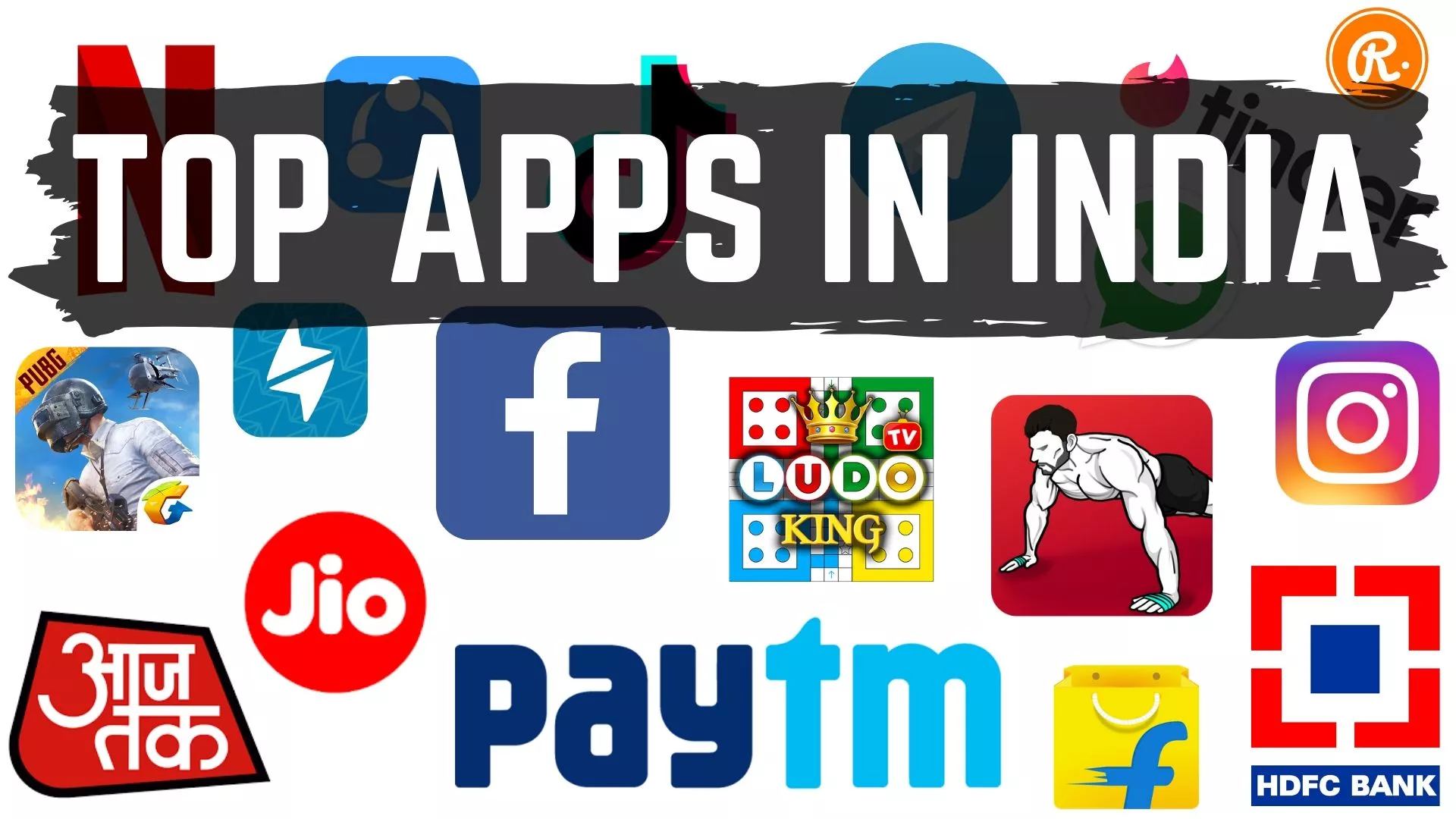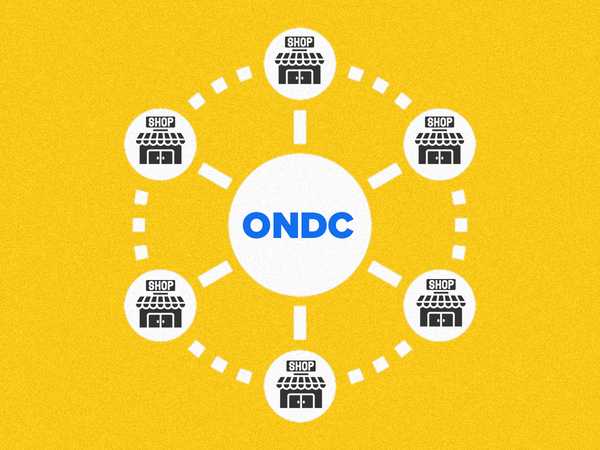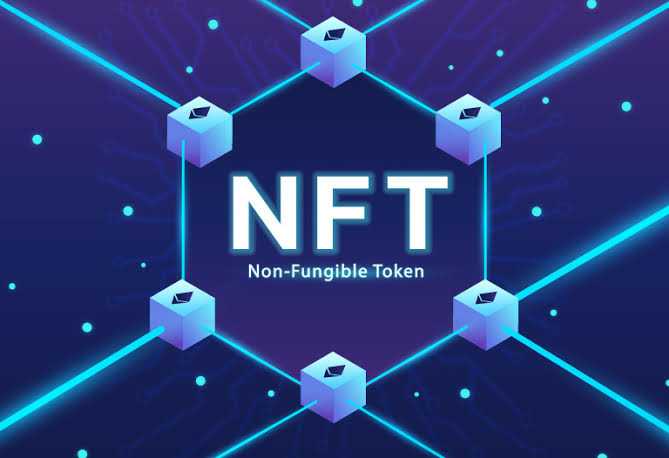Anime Beyond Borders: Exploring the Global Popularity of Japanese Animation and Its Impact on Pop Culture
This article explores the worldwide fascination with Japanese animation, known as anime, and its profound impact on global popular culture. We delve into the origins and evolution of anime, examine its appeal to a diverse range of audiences, and explore how it has influenced other forms of entertainment and media.
1. Introduction: Understanding Anime and Its Global Popularity

Anime, originating in Japan, has become a global phenomenon that enthralls millions of fans worldwide. This distinctive form of animation is known for its colorful artwork, fantastical themes, and vibrant storytelling. The evolution of anime as an art form has led to an immense variety of genres catering to different audiences and age groups.
The rise of anime can be traced back to the early 20th century, with it garnering international attention in the 1960s, following the success of works like Astro Boy by Osamu Tezuka. Since then, the medium has continued to grow in popularity, thanks to iconic series such as Pokémon, Naruto, One Piece, and Studio Ghibli's masterpieces like Spirited Away and My Neighbor Totoro. These series not only captivated audiences but also vastly influenced popular culture.
One reason behind anime's worldwide success is its universal appeal – it addresses themes and emotions that resonate with people across cultural boundaries. Typically exploring topics such as love, friendship, loss, and personal growth, anime allows viewers to connect deeply with the characters on an emotional level. Furthermore, these animations often incorporate elements of traditional Japanese folklore and Western pop culture.
Another aspect contributing to its global popularity is the burgeoning online community that fosters discussion and engagement among fans. Internet forums, social media platforms, and streaming services have only bolstered anime's visibility and accessibility in recent years.
In conclusion, anime's global popularity can be attributed to its diverse storytelling, relatable themes transcending cultural barriers, and the extensive reach provided by the digital age. As a testament to its continued growth, this unique form of entertainment captivates fans from all corners of the world.
2. From Japan to the World: The History of Anime's Expansion

Anime's expansion from Japan to the rest of the world has a rich history marked by key events and milestones. In the early 20th century, Japanese animators drew inspiration from French, American, and Russian animation, giving birth to a new form of animated storytelling. The first public screening of anime was in 1917, with short films such as “Namakura Gatana” and “Dekobo Shingacho.”
The post-World War II era saw the emergence of pioneers like Osamu Tezuka, creator of "Astro Boy." This series played a crucial role in energizing the industry and pushing Japanese animation into the world arena. Entry into the U.S. market was initiated by serialized dubbed programs like “Speed Racer” in the late 60s.
In the decades that followed, Hayao Miyazaki and Studio Ghibli opened doors for anime as an art form with acclaimed works like "My Neighbor Totoro" and "Spirited Away." This brought global recognition to Japanese animation; its iconic visual style becoming ubiquitous worldwide.
Anime's rise in popularity also led to the growth of conventions such as Anime Expo in Los Angeles, which began in 1992 as an event celebrating Japanese pop culture. Simultaneously, online forums and fan communities grew in size and influence as viewers connected to celebrate their shared passion.
As anime's reach extended further into international markets, platforms like Netflix and Crunchyroll provided easy access for people inclined to explore this unique style of storytelling. This growing accessibility has cemented anime as a beloved medium around the globe.
3. Anime in the West: Its Reception and Impact on Pop Culture

Anime in the West has had a significant impact on pop culture, gaining immense popularity over the past few decades. Initially viewed as a niche art form, it has gradually become mainstream, influencing various aspects of Western culture.
The reception of anime in the West can be traced back to the 1960s, with the introduction of iconic shows like Astro Boy and Speed Racer. However, it was during the 1990s that anime truly took off in popularity, thanks to the arrival of Pokémon, Sailor Moon, and Dragon Ball Z. These series not only attracted a dedicated fan base but also served as a gateway for many fans to explore other genres within the anime world.
One of anime's most significant impacts on Western pop culture is its influence on animation styles and storytelling techniques. Western animators often borrow visual elements from Japanese animation, such as vibrant colors and exaggerated facial expressions. Anime storytelling techniques have inspired Western creators, who have balanced complex character development with fast-paced action sequences.
Anime has also infiltrated other forms of entertainment in the West, such as video games and comics. The global gaming industry has seen an influx of Japanese-inspired games like Final Fantasy, The Legend of Zelda, and Persona series. Anime's popularity has even sparked collaborations between Western comics and manga publishers for cross-cultural projects.
Moreover, anime's impact on fashion has been undeniable, with clothing lines inspired by anime characters becoming increasingly common among youth. Online streaming platforms like Netflix and Crunchyroll have helped spread awareness of anime in western countries giving it a broader reach.
In conclusion, anime's reception in the West has transformed from being a niche interest to a widely celebrated art form. Its impact on pop culture will continue to grow as it influences more creators across various media forms and fosters strong fan communities worldwide.
4. The Otaku Subculture: The Role of Fan Culture in Anime's Global Appeal

The Otaku Subculture plays a significant role in the global appeal of anime, serving as a driving force behind the growing popularity of this unique art form. Otaku, a term used to describe avid fans of anime, manga, and other aspects of Japanese popular culture, showcase their passion for these mediums through their dedication and extensive knowledge.
The growth of online communities has aided in the spread of otaku culture across borders, allowing fans from around the world to connect over their shared interests. These communities often discuss plotlines, share fan theories and critiques, and contribute to the creation of fan-made content such as artwork, fiction, and cosplay.
Cosplay, or costume play, has become one of the most visible aspects of the otaku subculture. This involves fans dressing up as their favorite anime characters at conventions or other gatherings, expressing their love for the show or manga.
In addition to actively participating in various online and offline activities, fans also contribute financially to the anime industry. The purchase of DVDs, Blu-rays, merchandise, and subscriptions to streaming platforms fuels production companies' ability to create new content. This loyalty helps secure future enterprise within the animation sector.
Overall, the otaku subculture demonstrates a strong sense of community that fosters the growth and global appeal of anime. Their enthusiasm directly contributes to expanding accessibility for viewers worldwide and secures a bright future for this beloved art form.
5. Global Icons: The Most Popular Anime Franchises Around the World

1. Dragon Ball: With its epic story of love, loss, and battles against evil, Dragon Ball has resonated with millions of people since its debut in 1984. Goku and his friends continue to captivate audiences with high-stakes adventures and ever-evolving character arcs.
2. Naruto: Since 2002, the story of a young ninja aspiring to become a Hokage has gripped the hearts of viewers through its themes of friendship, perseverance, and growth. This franchise's mix of action, drama, and humor has made it an enduring favorite among anime fans around the world.
3. One Piece: Charting the adventures of Monkey D. Luffy as he pursues the legendary treasure One Piece, this ever-popular franchise stands out for its unique blend of humor, world-building, and captivating storylines. Since 1997, One Piece has built an ardent following that spans generations.
4. Pokémon: A worldwide phenomenon since 1996, Pokémon continues to dominate the anime scene with its playful creatures and engaging adventures. The addicting formula of exploration and capturing new creatures makes this franchise a timeless classic.
5. Attack on Titan: A more recent addition to the anime world, Attack on Titan's dark storyline and gritty realism have garnered it critical acclaim since its debut in 2013. The series' exploration of humanity's fight against titanic threats has made it a standout among international audiences.
6. My Hero Academia: Relatively new to the scene since 2016, My Hero Academia explores themes of heroism and teamwork through the journey of young superheroes-in-training. Its relatable young characters and captivating storytelling have set it apart as an emerging favorite among global viewers.
6. The Power of Adaptation: How Anime Influences Other Forms of Pop Culture

Anime, a unique form of animation originating in Japan, has seen exponential growth in popularity over the past few decades. Its influence has spread far beyond the world of animation, leaving a significant impact on various forms of pop culture.
One area where anime's influence is evident is in the fashion industry. Designers frequently draw inspiration from anime characters' costumes and styles, incorporating vibrant colors, bold patterns, and distinctive silhouettes into their designs. This fusion creates an eclectic blend that captivates fashionistas worldwide.
In the realm of music, artists often reference or draw inspiration from anime in their lyrics, music videos, and album artwork. Collaborations between musicians and anime franchises have led to memorable tracks and visuals that resonate with fans.
Movies and television have also been affected by anime's global reach. Hollywood has adapted several anime series into live-action films, while television networks air dubbed versions of popular shows, introducing these stories to entirely new audiences.
Additionally, manga (Japanese comic books) serve as the foundation for many successful anime series. This connection has encouraged more people to explore manga as a medium, leading to increased demand and accessibility for translated versions.
Video games are another area where anime has carved out its niche. Japanese role-playing games (JRPGs) often incorporate anime art styles and storytelling techniques. As a result, these games garner attention from fans who appreciate both the gameplay mechanics and the immersive narratives it offers.
Through its visual storytelling, imaginative worlds, and unforgettable characters, anime continually shapes pop culture's collective consciousness. Its adaptability and wide-ranging influence demonstrate how this once niche form of entertainment has become a global phenomenon.
7. How Anime Tackles Social and Political Issues: A Critical Look at Anime's Exploration of Taboo Topics

Anime has long been a medium for exploring social and political issues, often diving into taboo topics that challenge cultural norms and societal expectations. Many popular series tackle various subjects such as race, gender, sexuality, and societal hierarchies through their intricate storytelling and diverse characters.
For instance, the critically acclaimed anime "Attack on Titan" presents a dark reflection of human nature and conflict, where class divides and power struggles contribute to a devastating cycle of violence. Similarly, "Code Geass" engages with themes of imperialism, revolution, and the ethics of using violence for political aims. It forces viewers to question the costs of rebellion and the consequences of unchecked power.
Another example is "Tokyo Ghoul," which explores themes of identity, alienation, and morality through its portrayal of ghouls trying to coexist with humans in an oppressive society. By paralleling the plight of these fictional creatures with real-world issues like discrimination and xenophobia, the series encourages viewers to reflect on their own values and prejudices.
In addition to these darker themes, anime also examines social issues in more optimistic ways. Productions like "Gatchaman Crowds" offer a positive outlook on how ordinary citizens can use technology to shape their collective future. The series portrays innovative ways communities can address global challenges by advocating for communication-based solutions instead of relying solely on violent confrontation.
In conclusion, anime's exploration of taboo topics serves as a valuable avenue for promoting critical thinking about real-world social and political issues. By presenting complex stories through layered characters, creators not only entertain audiences but help them engage with challenging topics that encourage introspection and social awareness.
8. The Business of Anime: Its Economic Impact and Industry Trends

Anime, which originated in Japan, has had a significant economic impact on the global entertainment market. As a thriving industry, anime's high demand has resulted in an increasing number of productions and content availability. Key areas of growth within the industry include streaming platforms, merchandise sales, and collaboration with other sectors.
One of the most notable trends in the anime industry is the rapid expansion of streaming platforms. Services like Crunchyroll and Netflix have dedicated sections for anime, making it more accessible to a broader audience worldwide. This increased visibility has accelerated the growth of the market, generating substantial revenue from subscriptions and advertising.
Merchandise sales are another important aspect of the business of anime; they provide lucrative revenue streams for creators and licensors. Collectible items such as figures, apparel, and posters cater to avid fans while casual consumers are drawn to practical items like apparel and home goods featuring popular characters. Merchandising helps extend a series' longevity as well as generate additional income.
The anime industry's influence can also be seen in collaborations with other sectors like gaming and tourism. Many popular game franchises have incorporated anime-style elements into their design, creating engaging visual experiences for players. These collaborations help cross-promote properties and expand market reach.
Overall, the economic impact of the anime industry spans multiple markets thanks to its dedicated fan base, creative storytelling, and visually captivating art style. The increasing accessibility through streaming platforms only solidifies its position as an influential force in global entertainment while merchandise sales and cross-sector collaborations offer continued opportunities for growth.
9. The Dark Side of Anime: Japanese Animators Struggle with Poverty Despite Global Popularity

Anime has become globally popular, drawing millions of fans across the world who celebrate its vibrant stories, unique art style, and remarkable characters. However, behind the colorful imagery lies a darker reality: many Japanese animators struggle to make ends meet despite their works garnering widespread acclaim.
With the rise of internet streaming platforms and globalization, anime has never been more accessible, and its demand continues to soar. Yet, one of the main challenges that the anime industry confronts is piracy. A significant number of viewers resort to unauthorized websites to watch their favorite shows for free, cutting into the already meager profits that these animators receive.
Piracy not only affects the animators' income but also undermines the sustainability of the anime industry itself. Aspiring artists join the field in pursuit of their passion with dreams of creating compelling stories and visuals. Unfortunately, many wind up labouring for long hours at low wages – a consequence of dwindling revenues due in part to piracy.
Creating awareness and urging fans to support official platforms play a crucial role in combating piracy. By choosing legitimate channels like Crunchyroll, Funimation or Netflix, fans contribute towards compensating creators fairly for their hard work and talent. The collective effort to put an end to piracy not only enables animators to break free from poverty but also paves the way for a thriving anime industry – one where passionate creators can realize their full potential without fear or financial constraint.
To preserve the future of anime and ensure fairness for all those involved in bringing these animated worlds to life, it is essential that fans stand against piracy and actively promote ethical consumption within the community.
10. Conclusion: Addressing the Issue of Anime Industry's Working Conditions

In conclusion, the issue of poor working conditions within the anime industry is a pressing matter that requires immediate attention. Joint efforts by stakeholders, including studio executives, government entities, and fans, are essential in developing fair labor practices. Initiatives such as fair wages, reasonable work hours, and improved working environments will benefit the industry as a whole. Encouraging transparency and accountability will help elevate the value of the anime industry and ensure its continued growth and prosperity globally.
Thanksgiving :
Thank you Shovan for your help and contribution for making this article better! ❤🎊🎈
This article explores the worldwide fascination with Japanese animation, known as anime, and its profound impact on global popular culture. We delve into the origins and evolution of anime, examine its appeal to a diverse range of audiences, and explore how it has influenced other forms of entertainment and media.
1. Introduction: Understanding Anime and Its Global Popularity

Anime, originating in Japan, has become a global phenomenon that enthralls millions of fans worldwide. This distinctive form of animation is known for its colorful artwork, fantastical themes, and vibrant storytelling. The evolution of anime as an art form has led to an immense variety of genres catering to different audiences and age groups. The rise of anime can be traced back to the early 20th century, with it garnering international attention in the 1960s, following the success of works like Astro Boy by Osamu Tezuka. Since then, the medium has continued to grow in popularity, thanks to iconic series such as Pokémon, Naruto, One Piece, and Studio Ghibli's masterpieces like Spirited Away and My Neighbor Totoro. These series not only captivated audiences but also vastly influenced popular culture. One reason behind anime's worldwide success is its universal appeal – it addresses themes and emotions that resonate with people across cultural boundaries. Typically exploring topics such as love, friendship, loss, and personal growth, anime allows viewers to connect deeply with the characters on an emotional level. Furthermore, these animations often incorporate elements of traditional Japanese folklore and Western pop culture. Another aspect contributing to its global popularity is the burgeoning online community that fosters discussion and engagement among fans. Internet forums, social media platforms, and streaming services have only bolstered anime's visibility and accessibility in recent years. In conclusion, anime's global popularity can be attributed to its diverse storytelling, relatable themes transcending cultural barriers, and the extensive reach provided by the digital age. As a testament to its continued growth, this unique form of entertainment captivates fans from all corners of the world.
2. From Japan to the World: The History of Anime's Expansion

Anime's expansion from Japan to the rest of the world has a rich history marked by key events and milestones. In the early 20th century, Japanese animators drew inspiration from French, American, and Russian animation, giving birth to a new form of animated storytelling. The first public screening of anime was in 1917, with short films such as “Namakura Gatana” and “Dekobo Shingacho.” The post-World War II era saw the emergence of pioneers like Osamu Tezuka, creator of "Astro Boy." This series played a crucial role in energizing the industry and pushing Japanese animation into the world arena. Entry into the U.S. market was initiated by serialized dubbed programs like “Speed Racer” in the late 60s. In the decades that followed, Hayao Miyazaki and Studio Ghibli opened doors for anime as an art form with acclaimed works like "My Neighbor Totoro" and "Spirited Away." This brought global recognition to Japanese animation; its iconic visual style becoming ubiquitous worldwide. Anime's rise in popularity also led to the growth of conventions such as Anime Expo in Los Angeles, which began in 1992 as an event celebrating Japanese pop culture. Simultaneously, online forums and fan communities grew in size and influence as viewers connected to celebrate their shared passion. As anime's reach extended further into international markets, platforms like Netflix and Crunchyroll provided easy access for people inclined to explore this unique style of storytelling. This growing accessibility has cemented anime as a beloved medium around the globe.
3. Anime in the West: Its Reception and Impact on Pop Culture

Anime in the West has had a significant impact on pop culture, gaining immense popularity over the past few decades. Initially viewed as a niche art form, it has gradually become mainstream, influencing various aspects of Western culture. The reception of anime in the West can be traced back to the 1960s, with the introduction of iconic shows like Astro Boy and Speed Racer. However, it was during the 1990s that anime truly took off in popularity, thanks to the arrival of Pokémon, Sailor Moon, and Dragon Ball Z. These series not only attracted a dedicated fan base but also served as a gateway for many fans to explore other genres within the anime world. One of anime's most significant impacts on Western pop culture is its influence on animation styles and storytelling techniques. Western animators often borrow visual elements from Japanese animation, such as vibrant colors and exaggerated facial expressions. Anime storytelling techniques have inspired Western creators, who have balanced complex character development with fast-paced action sequences. Anime has also infiltrated other forms of entertainment in the West, such as video games and comics. The global gaming industry has seen an influx of Japanese-inspired games like Final Fantasy, The Legend of Zelda, and Persona series. Anime's popularity has even sparked collaborations between Western comics and manga publishers for cross-cultural projects. Moreover, anime's impact on fashion has been undeniable, with clothing lines inspired by anime characters becoming increasingly common among youth. Online streaming platforms like Netflix and Crunchyroll have helped spread awareness of anime in western countries giving it a broader reach. In conclusion, anime's reception in the West has transformed from being a niche interest to a widely celebrated art form. Its impact on pop culture will continue to grow as it influences more creators across various media forms and fosters strong fan communities worldwide.
4. The Otaku Subculture: The Role of Fan Culture in Anime's Global Appeal

The Otaku Subculture plays a significant role in the global appeal of anime, serving as a driving force behind the growing popularity of this unique art form. Otaku, a term used to describe avid fans of anime, manga, and other aspects of Japanese popular culture, showcase their passion for these mediums through their dedication and extensive knowledge. The growth of online communities has aided in the spread of otaku culture across borders, allowing fans from around the world to connect over their shared interests. These communities often discuss plotlines, share fan theories and critiques, and contribute to the creation of fan-made content such as artwork, fiction, and cosplay. Cosplay, or costume play, has become one of the most visible aspects of the otaku subculture. This involves fans dressing up as their favorite anime characters at conventions or other gatherings, expressing their love for the show or manga. In addition to actively participating in various online and offline activities, fans also contribute financially to the anime industry. The purchase of DVDs, Blu-rays, merchandise, and subscriptions to streaming platforms fuels production companies' ability to create new content. This loyalty helps secure future enterprise within the animation sector. Overall, the otaku subculture demonstrates a strong sense of community that fosters the growth and global appeal of anime. Their enthusiasm directly contributes to expanding accessibility for viewers worldwide and secures a bright future for this beloved art form.
5. Global Icons: The Most Popular Anime Franchises Around the World

1. Dragon Ball: With its epic story of love, loss, and battles against evil, Dragon Ball has resonated with millions of people since its debut in 1984. Goku and his friends continue to captivate audiences with high-stakes adventures and ever-evolving character arcs. 2. Naruto: Since 2002, the story of a young ninja aspiring to become a Hokage has gripped the hearts of viewers through its themes of friendship, perseverance, and growth. This franchise's mix of action, drama, and humor has made it an enduring favorite among anime fans around the world. 3. One Piece: Charting the adventures of Monkey D. Luffy as he pursues the legendary treasure One Piece, this ever-popular franchise stands out for its unique blend of humor, world-building, and captivating storylines. Since 1997, One Piece has built an ardent following that spans generations. 4. Pokémon: A worldwide phenomenon since 1996, Pokémon continues to dominate the anime scene with its playful creatures and engaging adventures. The addicting formula of exploration and capturing new creatures makes this franchise a timeless classic. 5. Attack on Titan: A more recent addition to the anime world, Attack on Titan's dark storyline and gritty realism have garnered it critical acclaim since its debut in 2013. The series' exploration of humanity's fight against titanic threats has made it a standout among international audiences. 6. My Hero Academia: Relatively new to the scene since 2016, My Hero Academia explores themes of heroism and teamwork through the journey of young superheroes-in-training. Its relatable young characters and captivating storytelling have set it apart as an emerging favorite among global viewers.
6. The Power of Adaptation: How Anime Influences Other Forms of Pop Culture

Anime, a unique form of animation originating in Japan, has seen exponential growth in popularity over the past few decades. Its influence has spread far beyond the world of animation, leaving a significant impact on various forms of pop culture. One area where anime's influence is evident is in the fashion industry. Designers frequently draw inspiration from anime characters' costumes and styles, incorporating vibrant colors, bold patterns, and distinctive silhouettes into their designs. This fusion creates an eclectic blend that captivates fashionistas worldwide. In the realm of music, artists often reference or draw inspiration from anime in their lyrics, music videos, and album artwork. Collaborations between musicians and anime franchises have led to memorable tracks and visuals that resonate with fans. Movies and television have also been affected by anime's global reach. Hollywood has adapted several anime series into live-action films, while television networks air dubbed versions of popular shows, introducing these stories to entirely new audiences. Additionally, manga (Japanese comic books) serve as the foundation for many successful anime series. This connection has encouraged more people to explore manga as a medium, leading to increased demand and accessibility for translated versions. Video games are another area where anime has carved out its niche. Japanese role-playing games (JRPGs) often incorporate anime art styles and storytelling techniques. As a result, these games garner attention from fans who appreciate both the gameplay mechanics and the immersive narratives it offers. Through its visual storytelling, imaginative worlds, and unforgettable characters, anime continually shapes pop culture's collective consciousness. Its adaptability and wide-ranging influence demonstrate how this once niche form of entertainment has become a global phenomenon.
7. How Anime Tackles Social and Political Issues: A Critical Look at Anime's Exploration of Taboo Topics

Anime has long been a medium for exploring social and political issues, often diving into taboo topics that challenge cultural norms and societal expectations. Many popular series tackle various subjects such as race, gender, sexuality, and societal hierarchies through their intricate storytelling and diverse characters. For instance, the critically acclaimed anime "Attack on Titan" presents a dark reflection of human nature and conflict, where class divides and power struggles contribute to a devastating cycle of violence. Similarly, "Code Geass" engages with themes of imperialism, revolution, and the ethics of using violence for political aims. It forces viewers to question the costs of rebellion and the consequences of unchecked power. Another example is "Tokyo Ghoul," which explores themes of identity, alienation, and morality through its portrayal of ghouls trying to coexist with humans in an oppressive society. By paralleling the plight of these fictional creatures with real-world issues like discrimination and xenophobia, the series encourages viewers to reflect on their own values and prejudices. In addition to these darker themes, anime also examines social issues in more optimistic ways. Productions like "Gatchaman Crowds" offer a positive outlook on how ordinary citizens can use technology to shape their collective future. The series portrays innovative ways communities can address global challenges by advocating for communication-based solutions instead of relying solely on violent confrontation. In conclusion, anime's exploration of taboo topics serves as a valuable avenue for promoting critical thinking about real-world social and political issues. By presenting complex stories through layered characters, creators not only entertain audiences but help them engage with challenging topics that encourage introspection and social awareness.
8. The Business of Anime: Its Economic Impact and Industry Trends

Anime, which originated in Japan, has had a significant economic impact on the global entertainment market. As a thriving industry, anime's high demand has resulted in an increasing number of productions and content availability. Key areas of growth within the industry include streaming platforms, merchandise sales, and collaboration with other sectors. One of the most notable trends in the anime industry is the rapid expansion of streaming platforms. Services like Crunchyroll and Netflix have dedicated sections for anime, making it more accessible to a broader audience worldwide. This increased visibility has accelerated the growth of the market, generating substantial revenue from subscriptions and advertising. Merchandise sales are another important aspect of the business of anime; they provide lucrative revenue streams for creators and licensors. Collectible items such as figures, apparel, and posters cater to avid fans while casual consumers are drawn to practical items like apparel and home goods featuring popular characters. Merchandising helps extend a series' longevity as well as generate additional income. The anime industry's influence can also be seen in collaborations with other sectors like gaming and tourism. Many popular game franchises have incorporated anime-style elements into their design, creating engaging visual experiences for players. These collaborations help cross-promote properties and expand market reach. Overall, the economic impact of the anime industry spans multiple markets thanks to its dedicated fan base, creative storytelling, and visually captivating art style. The increasing accessibility through streaming platforms only solidifies its position as an influential force in global entertainment while merchandise sales and cross-sector collaborations offer continued opportunities for growth.
9. The Dark Side of Anime: Japanese Animators Struggle with Poverty Despite Global Popularity

Anime has become globally popular, drawing millions of fans across the world who celebrate its vibrant stories, unique art style, and remarkable characters. However, behind the colorful imagery lies a darker reality: many Japanese animators struggle to make ends meet despite their works garnering widespread acclaim. With the rise of internet streaming platforms and globalization, anime has never been more accessible, and its demand continues to soar. Yet, one of the main challenges that the anime industry confronts is piracy. A significant number of viewers resort to unauthorized websites to watch their favorite shows for free, cutting into the already meager profits that these animators receive. Piracy not only affects the animators' income but also undermines the sustainability of the anime industry itself. Aspiring artists join the field in pursuit of their passion with dreams of creating compelling stories and visuals. Unfortunately, many wind up labouring for long hours at low wages – a consequence of dwindling revenues due in part to piracy. Creating awareness and urging fans to support official platforms play a crucial role in combating piracy. By choosing legitimate channels like Crunchyroll, Funimation or Netflix, fans contribute towards compensating creators fairly for their hard work and talent. The collective effort to put an end to piracy not only enables animators to break free from poverty but also paves the way for a thriving anime industry – one where passionate creators can realize their full potential without fear or financial constraint. To preserve the future of anime and ensure fairness for all those involved in bringing these animated worlds to life, it is essential that fans stand against piracy and actively promote ethical consumption within the community.
10. Conclusion: Addressing the Issue of Anime Industry's Working Conditions

In conclusion, the issue of poor working conditions within the anime industry is a pressing matter that requires immediate attention. Joint efforts by stakeholders, including studio executives, government entities, and fans, are essential in developing fair labor practices. Initiatives such as fair wages, reasonable work hours, and improved working environments will benefit the industry as a whole. Encouraging transparency and accountability will help elevate the value of the anime industry and ensure its continued growth and prosperity globally. Thanksgiving : Thank you Shovan for your help and contribution for making this article better! ❤🎊🎈






















Login to your account or create a new account to post comments!